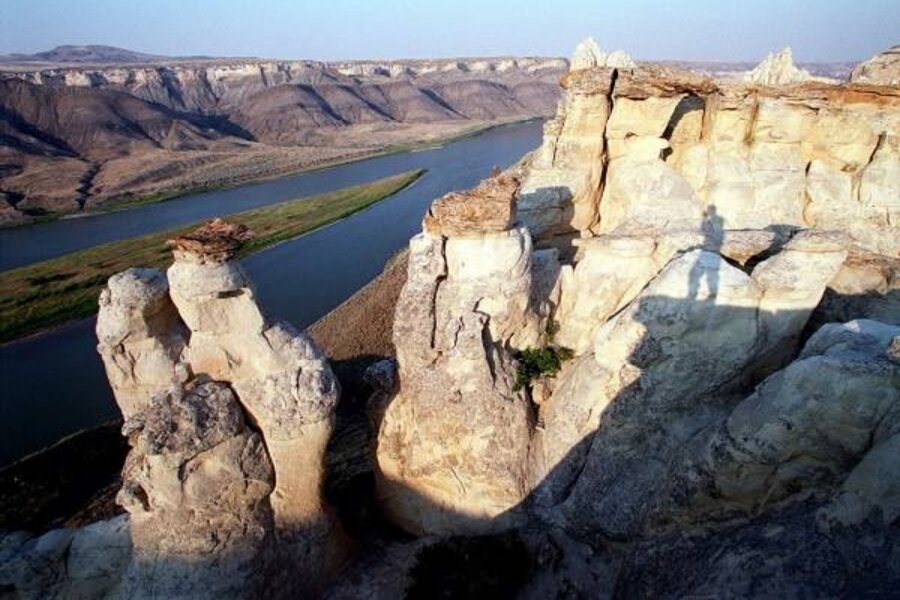Plan to restore the Upper Missouri River could boost fish and cottonwood trees
Loading...
| BILLINGS, Mont.
More than 90 years after dams started to choke off the Upper Missouri River, government officials are drafting a plan to restore the river's natural flow to boost its endangered fish and ailing stands of cottonwood trees.
The river courses for almost 150 miles through the Upper Missouri River Breaks National Monument, a remote and largely undeveloped badlands in central Montana set aside by President Bill Clinton in 2001. Its upstream reaches and tributaries are dammed off for power production and irrigation.
The federal officials drafting the plan hope periodic surges of water released from the dams could increase populations of the endangered pallid sturgeon and deliver fresh silt for new stands of cottonwoods to take root.
Representatives of state and federal agencies met in Great Falls recently to lay out the proposed changes. The goal is to create river conditions similar to historic spring floods, which could take several years.
"It's a first cut, to see if there's the legal authority to do this," says Gary Slagel, manager of the Upper Missouri River Breaks National Monument.
Any additional water releases would be controlled to prevent downstream property damage, says Leonard Duberstein with the federal Bureau of Reclamation, which operates three dams on the river and its tributaries.
The Upper Missouri once had flows topping 70,000 cubic feet of water per second, more than twice the highest levels in recent years.
As a result, pallid sturgeon no longer reproduce on the river and are kept from extinction only through artificial stocking. Stands of cottonwood trees that have lined the river since Lewis and Clark explored the area are fast dying.
Pressure is increasing on the government to act.
A federal lawsuit filed in Missoula two weeks ago by Western Watersheds Project pits environmentalists and river outfitters against cattle producers who graze their animals along the Upper Missouri's banks under federal permits.
The complaint charges that in the absence of reproducing cottonwoods that provide the only shade along the river, grazing should be halted. Ranchers have warned that would inflict a sharp blow on the area's struggling economy.
Changes to the federal dam operations offer a less contentious solution, says Janelle Holden with The Wilderness Society.
Higher levels could reshape the river bottom and create more favorable conditions for sturgeon to spawn, according to researchers.
And for the cottonwoods, a higher river would let new trees gain a foothold farther back from the banks, which would reduce their exposure to winter ice that can shear off saplings at ground level.
Any changes to dam operations must await completion of a pending study on sturgeon. In the meantime, Mr. Duberstein said his agency would raise flow levels as opportunity permits, although it is unlikely to go above 50,000 cubic feet per second.
"Our concern is can this be done without causing a lot of flood damage along the way," he says.
Editor’s note: For more articles about the environment, see the Monitor’s main environment page, which offers information on many environment topics. Also, check out our Bright Green blog archive and our RSS feed.





